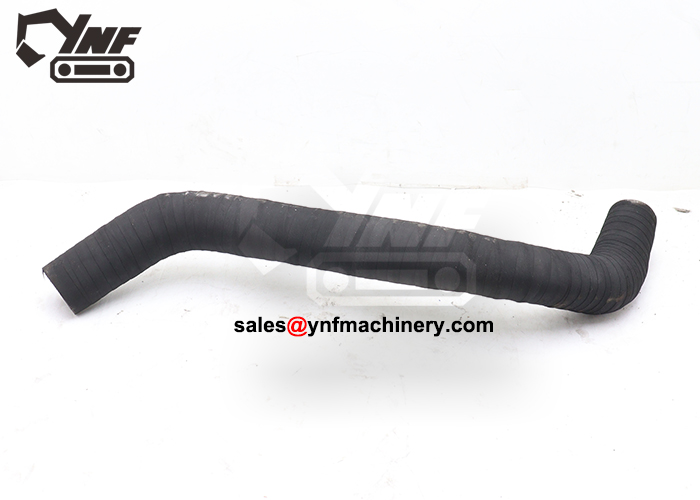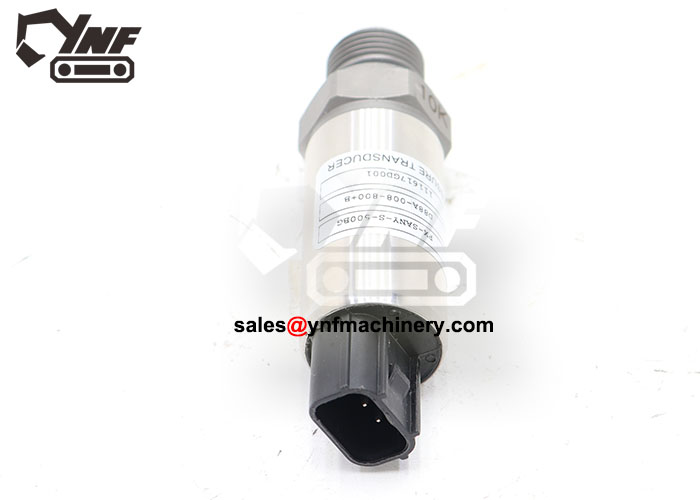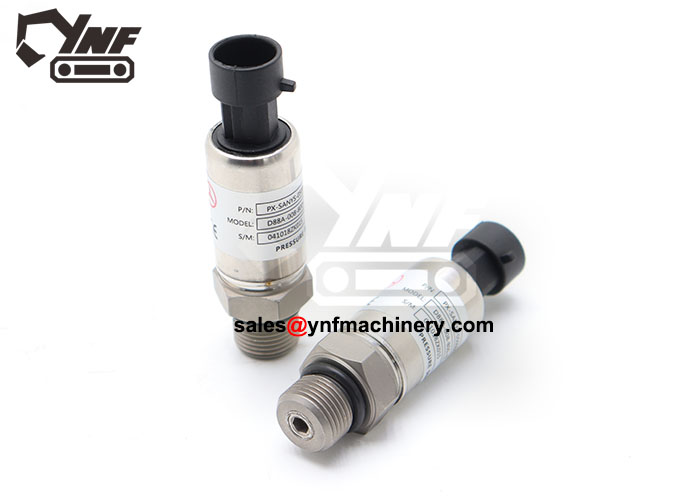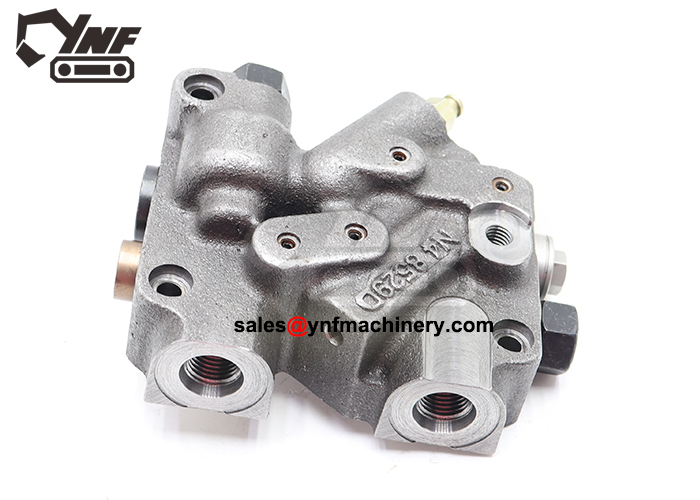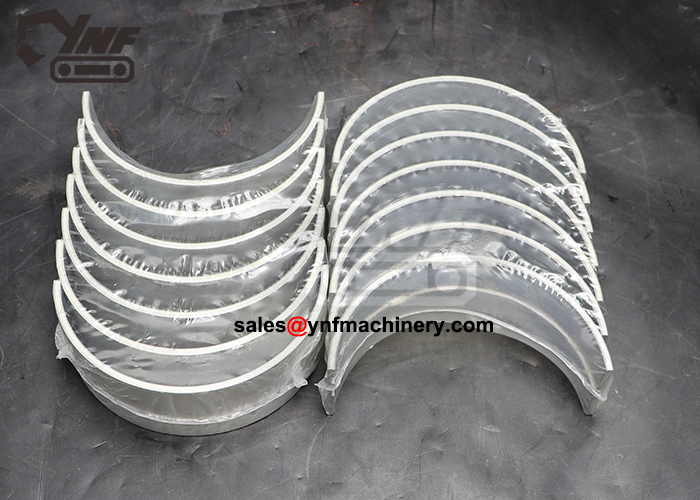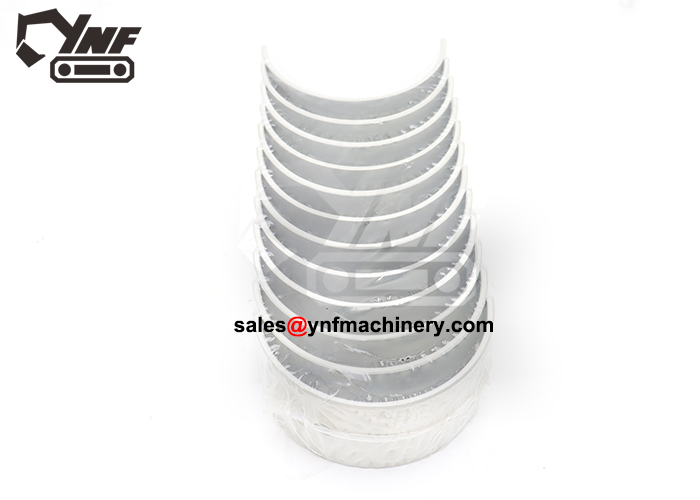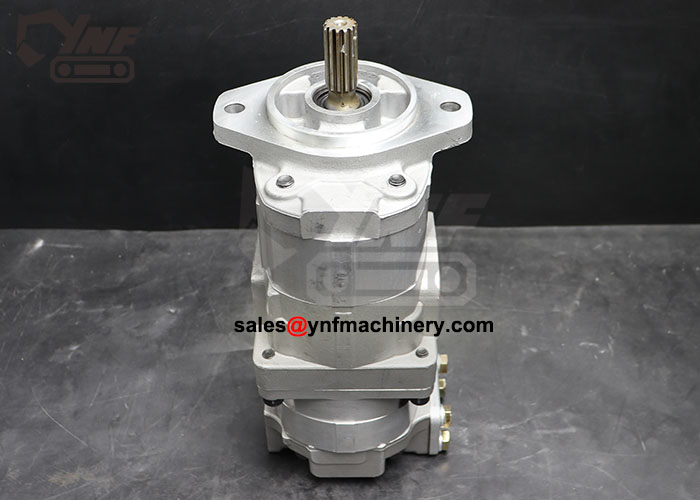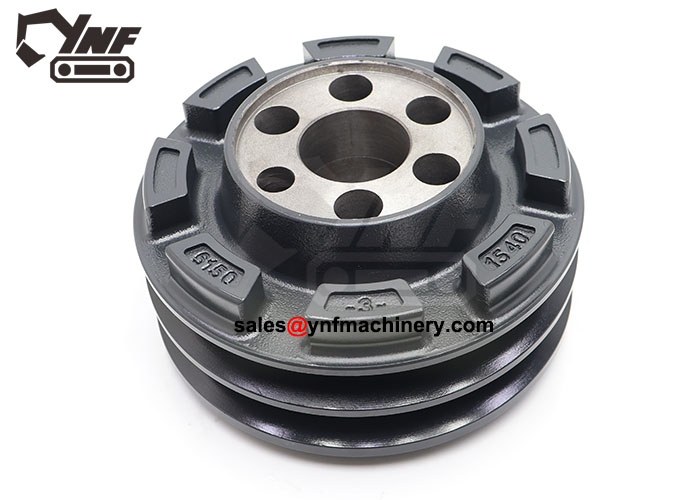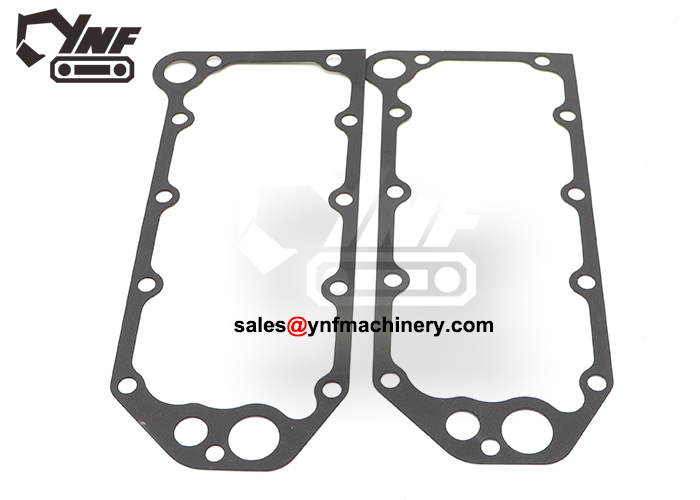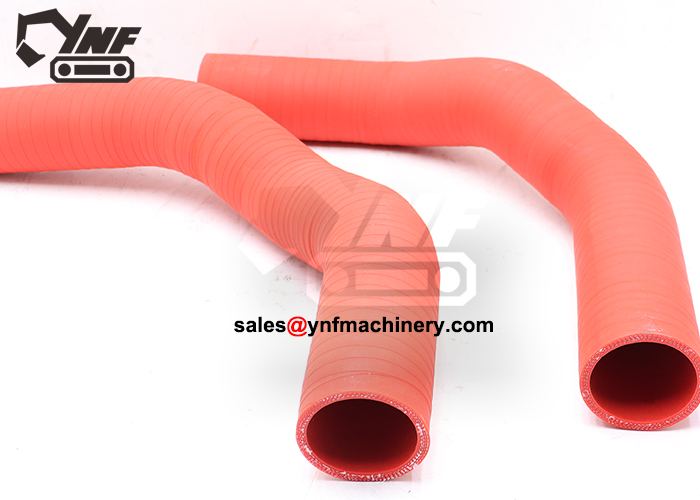
Operating an excavator requires more than just basic skills. You need to understand the excavator cabin parts name and their specific roles. This knowledge ensures you can handle the machine safely and efficiently. Each part of an excavator cabin, from the seat to the control levers, plays a vital role in maintaining productivity. Familiarity with these components reduces risks and enhances your ability to operate the equipment effectively.
Key Takeaways
Knowing excavator cabin parts helps with safety and work efficiency. Learning about parts like the seat and control levers is important for good operation.
The operator’s seat can be adjusted for comfort. Adjusting it correctly helps reduce tiredness and keeps you focused during long work hours.
Control levers and joysticks help move the excavator accurately. Learning to use them well boosts productivity and helps finish tasks better.
Pedals are important for moving and turning the excavator. Knowing where they are makes it easier to control and feel confident while working.
Taking care of cabin parts, like the screen and air systems, keeps the excavator working well and lasting longer.
Operator’s Seat: A Key Part of an Excavator Cabin
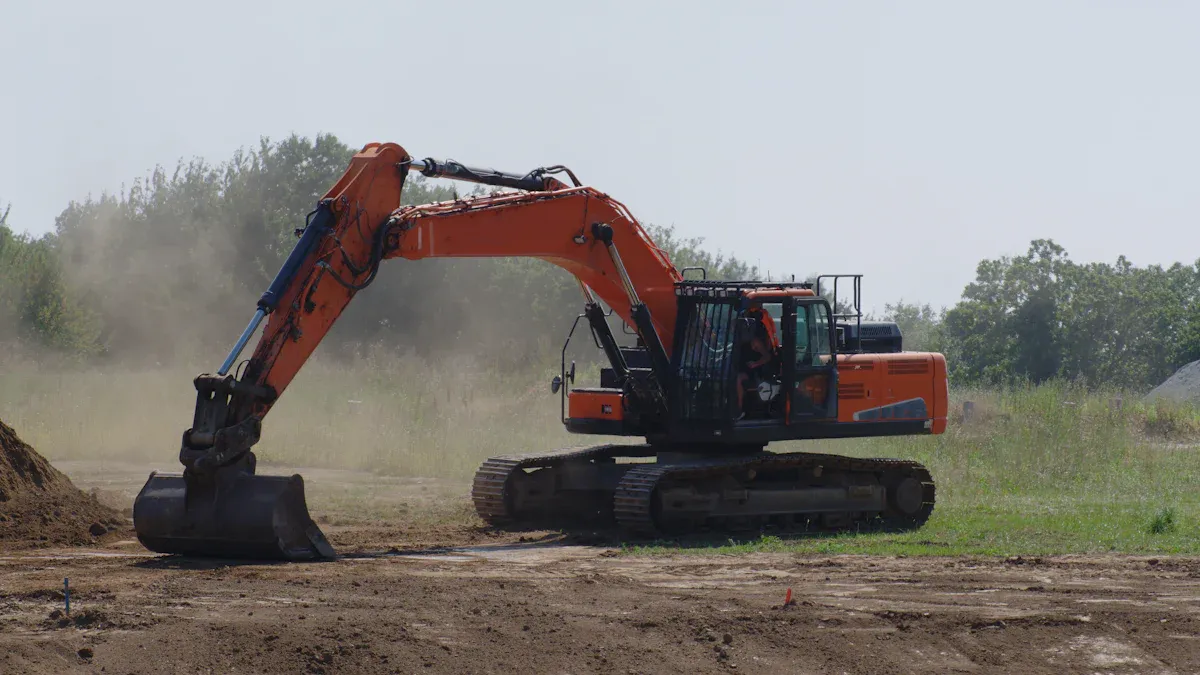
Features of the Operator’s Seat
Adjustable Settings for Operator Comfort
The operator’s seat in an excavator is designed with adjustable settings to enhance comfort. You can customize the seat’s height, angle, and lumbar support to suit your body type. This ensures proper spinal alignment, reducing the risk of discomfort or injury during long hours of operation. Modern seats also feature vibration-damping systems that absorb shocks, protecting your joints and muscles from strain. These adjustments not only improve comfort but also contribute to better focus and efficiency.
Ergonomic Design to Reduce Fatigue
Ergonomics plays a crucial role in the design of the operator’s seat. The seat’s shape and cushioning are tailored to minimize fatigue, even during extended use. Features like lumbar support reduce pressure on your lower back, while high-quality materials ensure durability and comfort. The ergonomic design also helps prevent common injuries associated with prolonged sitting, such as back pain or muscle stiffness.
Feature | Description |
|---|---|
High-Quality Original | This excavator cabin seat is an original Sany product, designed for durability and comfort. |
Universal Compatibility | Compatible with Komatsu excavators, ensuring a seamless fit for users. |
Excellent Wear Resistance | Features wear-resistant properties for long-lasting performance. |
Comprehensive Documentation | Comes with a machinery test report and video outgoing-inspection for transparency. |
Function of the Operator’s Seat
Provides a Stable and Comfortable Position for the Operator
The operator’s seat serves as the foundation of the operator compartment. It provides a stable and secure position, allowing you to control the excavator with precision. A well-designed seat ensures that you remain steady, even when navigating uneven terrain or performing complex tasks. This stability is essential for maintaining control over the machine’s movements and ensuring safety.
Enhances Focus During Extended Operations
Long hours in the operator compartment can be physically demanding. A comfortable seat with ergonomic features helps you stay focused and alert. By reducing fatigue and discomfort, the seat allows you to concentrate on operating the excavator efficiently. This is especially important when working on large-scale projects that require sustained attention and precision.
Tip: Regularly inspect and maintain the operator’s seat to ensure it remains in optimal condition. A well-maintained seat not only enhances comfort but also extends its lifespan.
The operator’s seat is one of the most critical parts of an excavator. Its design and functionality directly impact your productivity and safety. By understanding its features and functions, you can make the most of this essential component.
Control Levers and Joysticks: Main Components of an Excavator
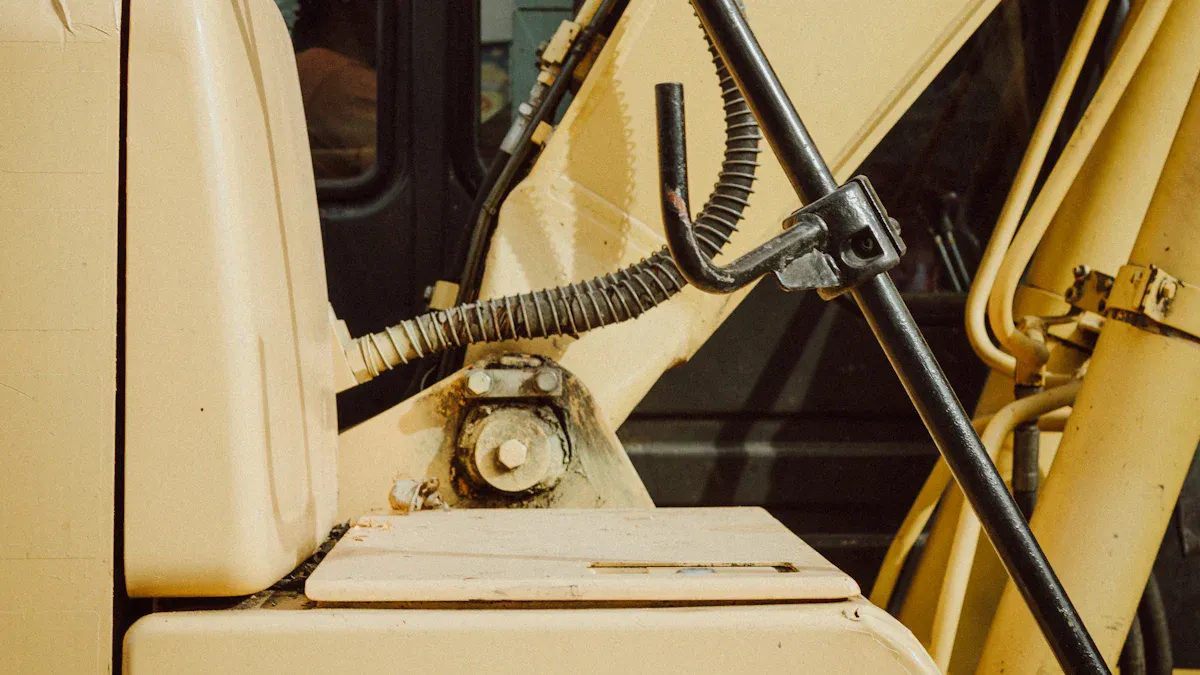
Types of Control Levers and Joysticks
Left and Right Joysticks for Movement Control
The left and right joysticks are the main control mechanism for operating an excavator. These joysticks allow you to manage the machine’s primary movements with precision. The left joystick typically controls the swing and boom movements, while the right joystick operates the arm and bucket. This separation of functions ensures that you can perform complex tasks with ease. The intuitive design of these joysticks makes them user-friendly, even for operators with minimal experience.
Auxiliary Levers for Attachments
Auxiliary levers play a crucial role when using additional tools or attachments. These levers control hydraulic-powered attachments like breakers, augers, or grapples. By using these levers, you can switch between tasks without leaving the cabin. This versatility enhances the efficiency of your operations, especially when working on projects that require multiple tools.
Functions of Control Levers and Joysticks
Operate the Boom, Arm, Bucket, and Swing Movements
Control levers and joysticks are essential for managing the main components of an excavator. They allow you to operate the boom, arm, bucket, and swing movements with precision. For example, you can use the left joystick to swing the upper structure or raise the boom, while the right joystick lets you extend the arm or curl the bucket. This level of control ensures that you can handle tasks like digging, lifting, or grading efficiently.
Manage Additional Tools Like Hydraulic Breakers or Augers
The auxiliary levers enable you to manage additional tools seamlessly. Whether you’re breaking concrete with a hydraulic breaker or drilling holes with an auger, these levers provide the control you need. Modern systems often include features like omnidirectional servos, which enhance the responsiveness of the joysticks. Some excavators even offer quick-switching capabilities between in-cab and remote control, making the system highly versatile. These advancements demonstrate the functional efficiency of the control system in executing mechanical operations.
Note: Familiarizing yourself with the excavator cabin parts name and their functions, including the main controls, helps you operate the machine safely and effectively.
Control levers and joysticks are among the most important parts of an excavator. Their design and functionality directly impact your ability to perform tasks with precision and efficiency. By mastering these controls, you can maximize the productivity of your excavator.
Pedals: Essential Parts of an Excavator Cabin
Pedals in an excavator cabin play a crucial role in controlling the machine’s movement and specific functions. Understanding their types and functions helps you operate the excavator efficiently and safely.
Types of Pedals in Excavators
Travel Pedals for Forward and Backward Movement
Travel pedals allow you to move the excavator forward or backward. These pedals are located on the floor of the cabin and are designed for easy access. By pressing the left or right pedal, you can control the direction and speed of the excavator’s tracks. This feature is essential for navigating construction sites or repositioning the machine during operations.
Swing Pedals for Rotational Control
Swing pedals enable you to rotate the upper structure of the excavator. This function is vital when you need to dig, load, or unload materials in different directions without moving the entire machine. The swing pedals provide precise control, allowing you to position the excavator accurately for various tasks.
Functions of Pedals
Control the Excavator’s Movement and Turning
Pedals are essential for managing the excavator’s mobility. Travel pedals let you move the machine across the site, while swing pedals help you turn the upper structure. This combination ensures that you can maneuver the excavator effectively, even in tight spaces.
Operate Specific Functions Like Swinging the Upper Structure
Swing pedals are particularly useful for tasks that require rotational movements. For example, when digging a trench or loading a truck, you can use the swing pedals to align the excavator’s arm and bucket with precision. This functionality enhances the machine’s versatility and efficiency.
Tip: Familiarize yourself with the pedal layout in your excavator cabin. Practicing their use can improve your control and confidence during operations.
Pedals are indispensable parts of an excavator. They provide the control needed for movement and specific functions, making them a vital component of the machine. By mastering their use, you can enhance your productivity and ensure safe operation.
Display Panel and Monitoring Systems in Excavator Cabins
The display panel in an excavator cabin serves as the operator’s primary interface for monitoring machine performance and health. Understanding its components and functions can help you operate the machine more effectively and safely.
Components of the Display Panel
Digital Screen for Real-Time Data
The digital screen provides you with real-time data about the excavator’s performance. It displays critical metrics such as fuel levels, engine temperature, and hydraulic pressure. Advanced telematics systems also offer insights into idle time and operational efficiency. These systems allow you to monitor performance trends and schedule preventive maintenance. The data remains accessible to owners and dealers for up to five years, ensuring long-term operational benefits.
Warning Indicators for Diagnostics
Warning indicators play a vital role in diagnosing potential issues. These indicators alert you to problems like low oil pressure or overheating. By addressing these warnings promptly, you can prevent costly repairs and downtime. The design of these indicators ensures they are easy to understand, even for less experienced operators. This feature enhances the usability of the display panel and contributes to safer operations.
Functions of the Display Panel
Provides Performance Metrics and Alerts for Potential Issues
The display panel helps you track performance metrics and identify potential issues before they escalate. For example, telematics systems provide detailed data on fuel consumption and idle time, enabling you to optimize efficiency. A study on human-machine interfaces highlights the importance of advanced display systems in presenting this complex data effectively. These systems improve usability and ensure you can operate the excavator safely.
Ensures the Operator Is Informed About Machine Health
Keeping the excavator in good condition requires constant monitoring. The display panel informs you about the machine’s health through diagnostic alerts and performance data. Research on ergonomic designs shows that innovative human-machine interfaces reduce operator workload. These designs make it easier for you to focus on the task while staying informed about the excavator’s condition.
Aspect Evaluated | Findings | Methodology |
|---|---|---|
HMI Design Impact | Different HMI designs affect workload | Experiments with human subjects aged 23-35 |
Ergonomic Assessment | Proposed designs reduce workload | NASA TLX method for subjective scores |
Relevance to Industry | Innovative HMIs improve ergonomics | Comparison of augmented interaction techniques |
The display panel and monitoring systems are indispensable for efficient excavator operation. By understanding their components and functions, you can enhance productivity and ensure the machine’s longevity.
Climate Control and Safety Features by YNF Machinery
Climate Control Systems in Excavators
Air Conditioning and Heating for Operator Comfort
Climate control systems in excavators ensure you remain comfortable regardless of the weather. Air conditioning keeps the cabin cool during hot days, while heating systems provide warmth in colder conditions. These features allow you to focus on your tasks without being distracted by extreme temperatures. Maintaining a stable cabin environment also reduces fatigue, helping you stay productive throughout the day.
Ventilation for Airflow Management
Proper ventilation is essential for maintaining fresh air inside the cabin. Ventilation systems in modern excavators manage airflow effectively, preventing the buildup of dust and odors. This feature is particularly useful when working in dusty or enclosed environments. Clean air improves your overall comfort and ensures a healthier workspace.
Tip: Regularly clean and maintain the air filters in your excavator to ensure optimal performance of the climate control system.
Safety Features in Excavator Cabins
Emergency Stop Button for Immediate Shutdown
The emergency stop button is a critical safety feature in every excavator. It allows you to shut down the machine instantly during emergencies. This feature minimizes the risk of accidents and protects both the operator and the equipment. Knowing the location and function of this button is essential for safe operation.
Seatbelt and Safety Locks for Operator Protection
Seatbelts and safety locks are designed to keep you secure while operating the excavator. The seatbelt prevents you from being thrown forward during sudden stops or impacts. Safety locks ensure that the machine’s controls remain inactive when not in use, reducing the risk of accidental movements. These features work together to enhance your safety during operations.
Functions of Climate Control and Safety Features
Maintain Operator Comfort in Various Weather Conditions
Climate control systems directly impact your comfort and efficiency. Features like air conditioning, heating, and ventilation create a stable environment, allowing you to work effectively in any weather. Studies show that ergonomic designs, including climate control, reduce fatigue and improve productivity in heavy construction tasks.
Enhance Safety During Operation
Safety features like the emergency stop button and seatbelt protect you from potential hazards. Ergonomic designs, such as adjustable seating and vibration-damping systems, further enhance safety by minimizing the risk of injuries. These features ensure that you can operate the excavator confidently and efficiently, even during extended use.
Note: YNF Machinery prioritizes operator safety and comfort by offering high-quality excavator parts with advanced ergonomic and safety features.
Understanding the names and functions of excavator cabin parts helps you operate the machine safely and efficiently. Regularly inspecting and maintaining these components ensures they perform optimally and last longer.
Pro Tip: Consistent maintenance reduces downtime and prevents costly repairs.
YNF Machinery provides high-quality excavator parts designed to meet your operational needs. With over 35 years of expertise, YNF Machinery ensures you get reliable components that enhance your machine’s performance. Visit YNF Machinery’s website to explore their extensive product range.
FAQ
1. What is the most important part of an excavator cabin?
Each part plays a vital role, but the operator’s seat and control systems are crucial. The seat ensures comfort and stability, while the controls manage the machine’s movements. Together, they enhance safety and efficiency.
2. How do I maintain the display panel in my excavator?
Keep the screen clean using a soft cloth. Avoid using harsh chemicals. Regularly check for software updates and ensure all warning indicators function properly. This helps maintain optimal performance.
Tip: Refer to your excavator’s manual for specific maintenance instructions.
3. Why are climate control systems important in excavators?
Climate control systems keep you comfortable in extreme weather. Air conditioning cools the cabin during hot days, while heating provides warmth in cold conditions. Proper ventilation also ensures fresh air, improving your focus and productivity.
4. How do pedals differ from joysticks in an excavator?
Pedals control movement and turning, while joysticks manage the boom, arm, and bucket. Pedals are foot-operated, whereas joysticks require hand operation. Both work together to provide precise control over the excavator.
5. Where can I find high-quality excavator parts?
You can find reliable excavator parts at YNF Machinery. They offer a wide range of components designed for durability and compatibility with various excavator brands.
Note: YNF Machinery has over 35 years of expertise in providing high-quality parts globally.



